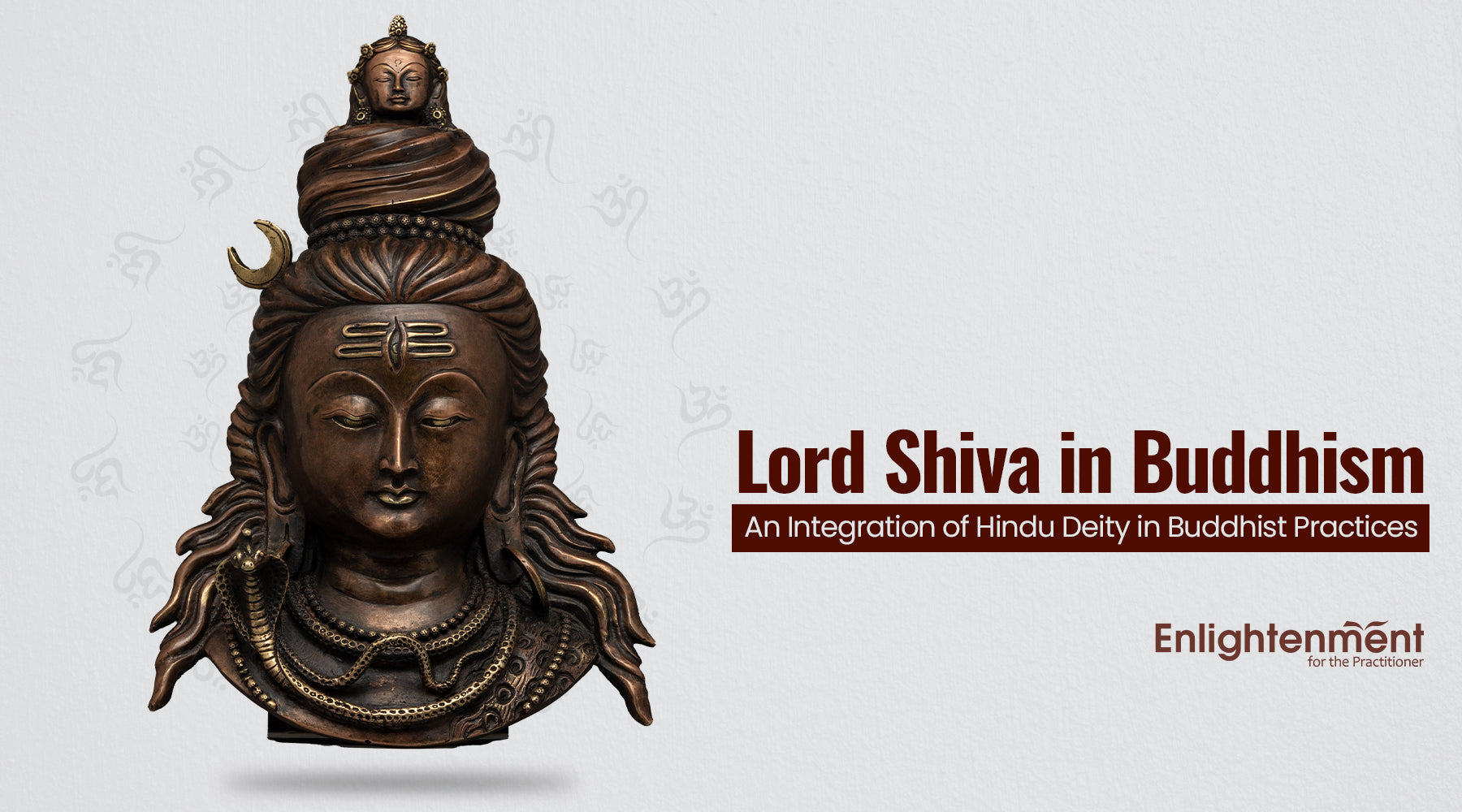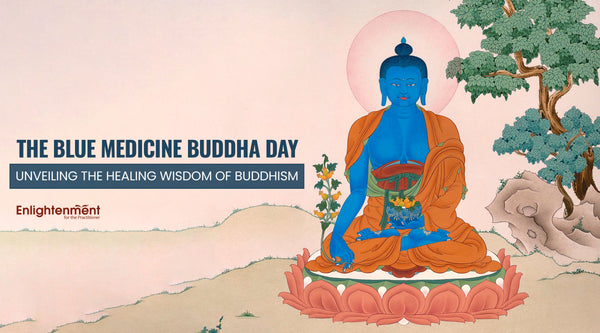Embracing Lord Shiva's Presence in Buddhist Practice
Lord Shiva, a central figure in Hinduism, holds a distinctive and significant role in Tibetan Buddhism, showcasing a captivating blend of religious syncretism and cultural fusion. This article explores the intricate integration and reverence of Lord Shiva within the Buddhist tradition in Tibet, unraveling the complexities and nuances of this intriguing amalgamation.
Key Takeaways
- Lord Shiva is acknowledged and revered in Buddhism but with interpretations and roles distinct from Hinduism.
- His integration into Buddhism exemplifies the syncretic nature and adaptability of religious practices in the Himalayan region.
- The iconography and rituals associated with Shiva in Buddhism demonstrate significant deviations from traditional Hindu practices.
Exploring Lord Shiva in Hinduism
Lord Shiva, a pivotal figure in Hinduism, plays a vital role in the Trimurti, embodying the forces of destruction and regeneration. His character encompasses paradoxical elements – from the ascetic yogi meditating on Mount Kailash to the cosmic dancer Nataraja, representing destruction and benevolence. This multifaceted nature draws a diverse following, engaging in various worship practices.
Symbolic Worship of Shiva
Shiva's worship primarily revolves around the aniconic Shiva Linga, symbolizing the creative and destructive forces of the universe. His attributes, including the trident (Trishula), serpent (Vasuki), and drum (Damaru), hold profound symbolism. The trident signifies his dominion over the physical, spiritual, and mental realms, while the serpent represents the conquered ego, and the drum symbolizes the rhythm of creation.
Historical Interplay between Hinduism and Buddhism
Click here to view Lord Shiva Statue
The historical interconnection of Hinduism and Buddhism in the Indian subcontinent facilitated the exchange of ideas, rituals, and deities. The assimilation of Lord Shiva into Buddhist practices is a testament to this interaction, reflecting a profound cultural and spiritual amalgamation.
- Shiva in Early Buddhist Texts
Early Buddhist texts mention deities resembling Shiva, often portrayed in roles distinct from their Hindu counterparts. These beings are considered part of Buddhist cosmology, serving as protectors or illustrating moral lessons.
Syncretic Nature of Buddhism: Incorporation of Local Beliefs
Buddhism's inclusive and adaptable nature allows the absorption of local deities and traditions. This inclusive approach paved the way for integrating Lord Shiva into Buddhist practices, not as a central deity but as a significant figure within the extensive Buddhist pantheon.
Shiva as a Guardian Deity
Shiva is often venerated within Buddhism as a protective deity, safeguarding the dharma and its adherents. This role represents a notable departure from his Hindu identity as the force of destruction and regeneration.
Iconography and Physical Attributes of Lord Shiva
In Hinduism: Lord Shiva's Iconography
In Hindu iconography, Lord Shiva is portrayed with a powerful and distinctive presence. His fair or ash-covered body symbolizes spiritual transcendence and his identity as an ascetic yogi. The third eye on his forehead represents insight and divine wisdom, while the crescent moon in his matted hair signifies mastery over time and the cyclical nature of the universe.
Attributes and Symbols
- Third Eye: Shiva is often depicted with a third eye on his forehead, symbolizing wisdom, perception, and insight beyond the tangible. This third eye represents his omniscience and enlightenment.
- Crescent Moon: The crescent moon adorning Shiva's head signifies the cosmic rhythm and the flow of time. It also denotes his mastery over time and serene demeanor, contrasting with the moon's cyclical phases and unchanged internal nature.
- Matted Hair & Ganga: Shiva's unruly, matted hair symbolizes his ascetic lifestyle and detachment from worldly comforts. The Ganges River flowing through his hair metaphorically represents the life-giving power and sanctity associated with his presence.
- Trishula (Trident): Shiva's trident, or trishula, symbolizes his control over the physical, mental, and spiritual realms. Additionally, it serves as a metaphor for eliminating ego, desire, and ignorance.
- Damaru (Drum): Representing the universe's creative and sustaining cosmic sound, the damaru embodies the rhythmic beat of creation and the heartbeat of existence.
- Snake (Serpent): The snake wrapped around Shiva's neck symbolizes his mastery over death and fear. It signifies his ability to transform adverse emotions' poison into positive energies.
- Ash and Vibhuti (Sacred Ash): Shiva's ash-covered body symbolizes his renunciation of worldly attachments and the transient nature of life. It serves as a poignant reminder of the temporary existence of worldly pursuits.
- Mount Kailash: Shiva is often depicted residing atop Mount Kailash, symbolizing his connection to the Himalayas—a region associated with intense meditation and spiritual enlightenment.
- Blue Throat (Neelakantha): Legend states that Shiva consumed poison during the ocean's stirring, resulting in a blue throat. This signifies his self-sacrifice for the cosmos's benefit and his resilience in adversity.
- Tiger Skin: Shiva's attire of tiger skin symbolizes his triumph over primal and basic desires, reflecting his mastery over instinctual aspects of human nature.
- Shiva Linga: The Shiva Linga, an abstract representation of Lord Shiva, embodies the creation and destruction of the universe. Central to Shiva's worship in Hinduism, it symbolizes his formless, limitless, and all-pervasive nature.
In Tibetan Buddhism: Shiva's Adaptation in Buddhism
Click here to view our Lord Shiva Art
Shiva's representation retains Hindu elements in Buddhism but adapts to Buddhist symbolism. Depicted in a wrathful form, reminiscent of Buddhist deities like Mahakala, Shiva symbolizes his role as a protector. His third eye and ash-covered body persist, highlighting insight and renunciation.
Attributes and Symbols
- Vajra: Replacing the trident, the vajra signifies the indestructible nature of reality in line with Buddhist teachings.
- Deer Skin: Shiva may sit on a deer skin instead of a tiger skin, symbolizing the Buddha's first sermon and teachings.
- Hand Gestures (Mudras): In Buddhism, Shiva may exhibit Buddhist hand gestures (mudras), symbolizing various aspects of the Buddhist path.
- Integration with Buddhist Deities: Shiva is often depicted as intertwined or in union with Buddhist deities, symbolizing the integration of his essence into the Buddhist belief system.
Theological Interpretations: Shiva as a Symbol of Impermanence
Buddhism interprets Shiva's destructive aspect metaphorically, symbolizing the impermanence and transitory nature of the material world, resonating with the Buddhist concept of Anicca (impermanence).
Integration with Buddhist Philosophy
The incorporation of Shiva into Buddhism goes beyond borrowing his Hindu persona; it reinterprets his significance to align with Buddhist doctrines. This integration emphasizes principles like enlightenment, compassion, and the cessation of suffering, which are central to Buddhist teachings.
Rituals and Practices: Worship and Offerings
Rituals and offerings dedicated to Shiva in Buddhism differ from Hindu practices. They often involve Buddhist mantras and meditation practices, focusing on spiritual enlightenment rather than material or worldly benefits.
Festivals and Celebrations
Buddhism acknowledges Shiva's role in various festivals, harmonizing with Buddhist beliefs. For example, during Shivaratri, a festival dedicated to Shiva, Buddhists may pay homage to him, recognizing his symbolic significance in their practice.
The integration of Lord Shiva into Buddhism exemplifies the dynamic, evolving nature of religious practices and beliefs. It underscores the fluidity that spiritual traditions can adapt, incorporating elements from diverse cultures to enrich and expand their philosophical and theological landscapes. Shiva's presence in the Tibetan Buddhist tradition is a vivid reminder of the interconnectedness of different spiritual paths and how they can influence and enhance each other.
SHIVA NATRAJ DANCE
Click here to view our Natraj Statue
Lord Shiva takes on the persona of Nataraj, the cosmic dancer, symbolized by the Sanskrit words "Nata," meaning dance, and "Raja," meaning king, forming "Nataraj," or "King of Dance." Nataraj embodies Shiva's performance of the Tandava, a potent dance in Hindu mythology representing the unending cycle of creation, preservation, and destruction. Shiva's dynamic and rhythmic movements define this cosmic dance.
The yoga pose known as Natrajasana, also called the 'Lord of the Dance Pose', pays homage to Nataraja's cosmic dance. This pose requires the practitioner to raise one leg behind the torso, holding it with one hand while extending the other arm forward. Achieving this position demands a combination of balance, strength, and flexibility.
Natrajasana visually depicts the equilibrium between opposing forces, mirroring Nataraja's(Lord Shiva) dance. Practicing this pose enhances one's ability to focus, concentrate, and maintain physical and mental stability. It involves stretching the hips and shoulders and strengthening the knees, ankles, and core.



1 comment
Ashith Murthy
There is worship of shiva linga in Buddhism